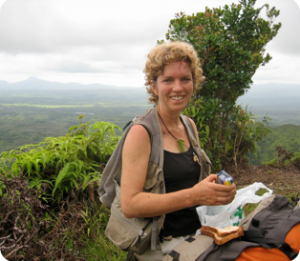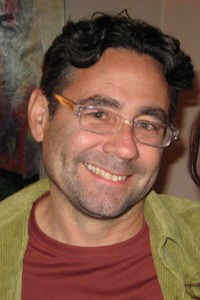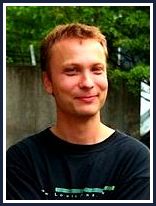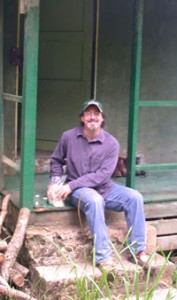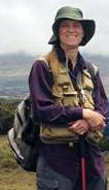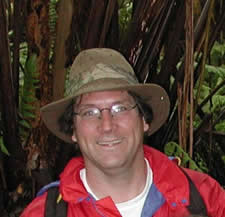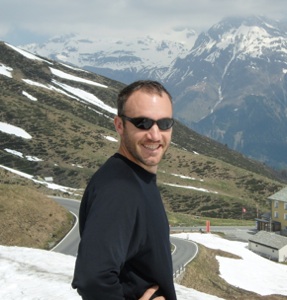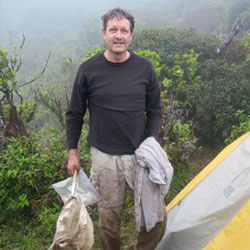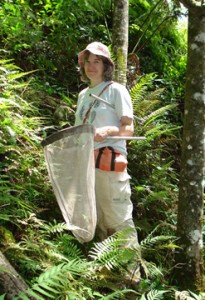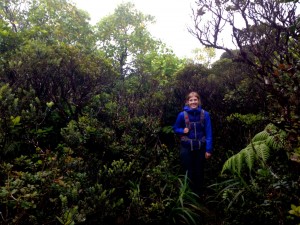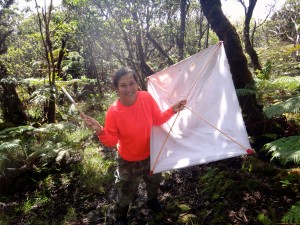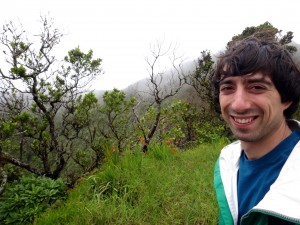Principal Investigators
Rosie’s research focuses on understanding evolutionary patterns and processes among populations and species. Her primary focus is on islands, particularly remote hotspot islands of the Pacific. Hotspot archipelagoes – in which islands emanate from a single volcanic hotspot from which they are progressively carried away by a geological plate – allow us to examine how communities have changed over time and thus gain insight into the nature of processes shaping communities over evolutionary time. These archipelagoes make it possible to visualize snapshots of evolutionary history. Thus, early stages of diversification and community formation can be studied on the island of Hawaii, an island still forming, and compared to progressively later stages on the older islands of Maui, Lanai, Molokai, Oahu, and Kauai. Much of Rosie’s work has focused on the Hawaiian Tetragnatha and the iconic Happy Face spider. She is currently a professor at the University of California, Berkeley.

Dan’s research delves into the regulation of interacting species and maintenance of biodiversity in ecological communities. He seeks to understand spatial patterns of relative abundance and species richness, and the factors that promote or impair local population persistence and species coexistence in ecosystems, especially among the hyperdiverse insects and invertebrates. The structure and dynamics of who eats who in food webs – trophic ecology – provides central underpinnings to ecology and to this research. Dan pursues broadly conceptual research at large scales as well as local phenomena in ‘natural’ and managed ecosystems. He is currently also working on another great effort in Hawaii which is looking to understand fragmentation via Hawaii’s kipuka, or forest fragments created by lava. Check out The Kipuka Project for more information. Dan is currently an Associate Professor at the University of Maryland.
Harte’s research focuses on the effects of human actions on, and the linkages among, biodiversity, ecosystem structure and function, and climate. His work spans a range of scales, from plot to landscape to global, and utilizes field manipulation experiments, the study of patterns in nature, and mathematical modeling. Two specific goals are to understand the nature and causes of patterns in the distribution and abundance of species and to understand the extent to which ecosystem responses to climate change may result in feedbacks to climate that can either ameliorate or exacerbate global warming. An overarching goal of his research is to understand the interdependence of human well-being and the health of ecosystems. John is currently a professor at University of California, Berkeley.
Neo is interested in the structure and function of complex networks, especially ecological networks involving feeding relationships, population dynamics, evolution and interactions with humans. He is a broadly trained interdisciplinary ecologist who employs empirically and theoretically oriented computational tools including simulations, visualizations, informatics, and games to elucidate the complex interdependencies of all life on earth. We pursue questions such as 1) What is the balance of life and how do ecological stability and human interaction affect that balance? 2) How do mutualism, competition, feeding interactions, population dynamics and speciation interact within complex ecological networks? and 3) How can we improve human understanding and interactions with nature in order to become more ecologically and socially sustainable? Neo is currently an Associate Professor at the University of Arizona.
Rasmus Nielsen’s research focuses on statistical and computational aspects of evolutionary theory and genetics. One of the central problems he has been interested in is the molecular basis of evolutionary adaptation. What happens at the molecular levels as one species is transformed into another over evolutionary time? To address this question he has developed a number of computational methods and applied them to large scale genomic data, such as genomic comparisons of humans and chimpanzees. Rasmus Nielsen has also worked on statistical methods in other aspects of population genetics, medical genetics, phylogenetics, molecular ecology, and molecular evolution. He is currently a professor at the University of California, Berkeley.
Dr. O’Grady is interested understanding the patterns and processes that generate and maintain biological diversity. Research projects in his laboratory cover a range of biological disciplines including morphology and taxonomy, phylogenetic systematics, population genetics, molecular evolution and genomics to examine the evolutionary history of endemic Hawaiian Insects, particularly flies in the family Drosophilidae. He has described 80 species and has two taxa named after him, a leaf hopper (Cicadellidae: Nesophrosyne) and a long-legged fly (Dolichopodidae: Campsicnemus). He is currently a Professor at Cornell University.
Diana is focused on the interactions between plants and insects. She is interested in the evolutionary and ecological dynamics of these interactions, including parasitic phytophagous and mutualistic pollination systems. The other main focus of her research is the radiation and diversification of species on islands. Together, the biogeographic patterns of speciation on islands and the ecological analysis of interacting groups has proved an exciting way to investigate evolution and natural selection. She is currently a researcher at the Natural History Museum, London.
Don is fascinated by the evolution of species and the interplay between local adaptation and speciation, behavioral and physiological mechanisms, ecological and environmental diversity & genetic basis of traits and genome evolution. The Hawaiian Islands are an ideal location to investigate the ecology and evolution of species because there are amazingly high numbers of endemic species that are found across the highly variable environments of these islands. Don works with the Hawaiian Drosophila, a highly species rich group (800+ species). He has recently moved from the University of Hawaii, Hilo to the University of Nevada Las Vegas, where he is Professor and Director of the School of Life Sciences.
Dan seeks to understand the causes of evolutionary radiations. Why do some groups of organisms contain so many species, and why do many other groups contain so few? Why do some groups have such tremendous ecological and morphological diversity? How do ecological interactions influence the diversification of species and phenotypes, and how does diversification in turn affect ecological community structure? Dan has pursued these questions using a combination of fieldwork, molecular phylogenetics, and mathematical and computer modeling. He ultimately seeks to understand why some groups undergo dramatic evolutionary explosions and why many other groups do not. Dan is currently an Associate Professor at the University of Michigan.
George’s work focuses on two interrelated topics: the biology of biological invasions, and the history and structure of populations. Both topics are viewed especially in the context of biodiversity science. The work addresses both basic and applied questions, taking advantage of the opportunities associated with the geography of Pacific Basin, Pacific Islands, and Pacific Rim, including California. Research includes studies of the origins of endemic, indigenous and non-indigenous organisms, processes associated with colonization and invasion, and population structure. Some of this work deals with older colonizations and deeper history, such as the assembly of ecological communities in the South Pacific. Other work examines the recent colonizations of biological invasions. George is currently a William Muriece Hoskins Professor at the University of California, Berkeley.
Kerry is interested in investigating the nature and origin of species, focusing on genetic and phylogenetic behavioral changes that diverge early in speciation. Current research effort focuses on studies of reproductive behavior and the evolution of mate recognition among closely related species. Investigations of speciation in her laboratory include analyses of species boundaries, microevlutionary divergence through local population-level processes, and the genomic and phylogenetic consequences of speciation. Much of her research is focused on the cricket genus Laupala, a system where mate recognition evolution characterizes closely related species, sexual selection is a likely mechanism of early lineage divergence, genetic dissection of mate recognition and related traits is feasible, and phylogenetic replication of the process exists. With 37 species endemic to the Hawaiian archipelago, Laupala offers an exceptional model to test hypotheses regarding the role of mate recognition evolution in speciation. Kerry is currently a Professor at Cornell University.
Post-Docs
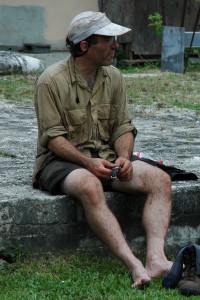 Curtis Ewing: Curtis’ research focuses on endemic Hawaiian sap beetles (Coleoptera: Nitidulidae) – evolution, systematics, biogeography, host plant associations, and micro fungal associations. His research includes questions in systematics and coevolution of fungus-host and herbivore-plant interactions using DNA sequencing. Curtis’ is leading the field collections in Hawaii, collecting specimens of arthropods across the islands at defined sites and has developed protocols for consistent quantitative sampling. Curtis is currently with CalFire, based in Redding, CA.
Curtis Ewing: Curtis’ research focuses on endemic Hawaiian sap beetles (Coleoptera: Nitidulidae) – evolution, systematics, biogeography, host plant associations, and micro fungal associations. His research includes questions in systematics and coevolution of fungus-host and herbivore-plant interactions using DNA sequencing. Curtis’ is leading the field collections in Hawaii, collecting specimens of arthropods across the islands at defined sites and has developed protocols for consistent quantitative sampling. Curtis is currently with CalFire, based in Redding, CA.
 Henrik Krehenwinkel: Henrik joined us from the Max Planck Institute for Evolutionary Biology in Plön, Germany. He is interested in understanding the genomic basis of adaptation, with particular focus on the Hawaiian happy face spider. For the Dimensions project, he has been developing a metabarcoding approach to in an attempt to accelerate biodiversity assessment, promising also to reveal hidden biodiversity: Metabarcoding combines two technologies: DNA based identification and high-throughput DNA sequencing. It uses universal PCR primers to mass-amplify DNA Barcodes from collections of specimens. Henrik is currently an Assistant Professor at Trier University, Germany.
Henrik Krehenwinkel: Henrik joined us from the Max Planck Institute for Evolutionary Biology in Plön, Germany. He is interested in understanding the genomic basis of adaptation, with particular focus on the Hawaiian happy face spider. For the Dimensions project, he has been developing a metabarcoding approach to in an attempt to accelerate biodiversity assessment, promising also to reveal hidden biodiversity: Metabarcoding combines two technologies: DNA based identification and high-throughput DNA sequencing. It uses universal PCR primers to mass-amplify DNA Barcodes from collections of specimens. Henrik is currently an Assistant Professor at Trier University, Germany.
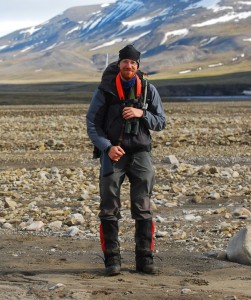 Stefan Prost: Stefan Prost is a postdoc in Rasmus Nielsen’s lab at the University of California, Berkeley, working on evolutionary and adaptive genomics. He started his research at the Max Planck Institute for Evolutionary Anthropology in Leipzig, Germany, working on ancient DNA analyses. After he received his PhD degree at the University of Otago in Dunedin, New Zealand, then relocated to the Swedish Natural History Museum to do a postdoc on evolutionary genomics. Last year he moved to Berkeley for his current postdoc, which investigates the genomic basis of adaptation to life in harsh environments in natural populations of foxes, as well as evolutionary processes, such as adaptive introgression and genome evolution, in extant and extinct birds.
Stefan Prost: Stefan Prost is a postdoc in Rasmus Nielsen’s lab at the University of California, Berkeley, working on evolutionary and adaptive genomics. He started his research at the Max Planck Institute for Evolutionary Anthropology in Leipzig, Germany, working on ancient DNA analyses. After he received his PhD degree at the University of Otago in Dunedin, New Zealand, then relocated to the Swedish Natural History Museum to do a postdoc on evolutionary genomics. Last year he moved to Berkeley for his current postdoc, which investigates the genomic basis of adaptation to life in harsh environments in natural populations of foxes, as well as evolutionary processes, such as adaptive introgression and genome evolution, in extant and extinct birds.
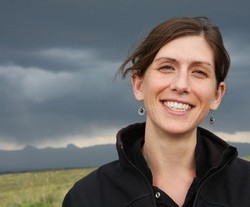 Kari Roesch-Goodman: Kari is interested in how species form and diversify. In her research, she combines tools from phylogenetics, population genetics and animal communication to examine what promotes speciation and diversification in evolutionary radiations. Her primary geographic focus is the Hawaiian Islands, which are a speciation factory – particularly for the terrestrial arthropods, of which 99% of the native fauna are endemic. Kari left her post-doc position at the University of California, Berkeley to become Data Scientist & Co-founder at AnimalBiome.
Kari Roesch-Goodman: Kari is interested in how species form and diversify. In her research, she combines tools from phylogenetics, population genetics and animal communication to examine what promotes speciation and diversification in evolutionary radiations. Her primary geographic focus is the Hawaiian Islands, which are a speciation factory – particularly for the terrestrial arthropods, of which 99% of the native fauna are endemic. Kari left her post-doc position at the University of California, Berkeley to become Data Scientist & Co-founder at AnimalBiome.
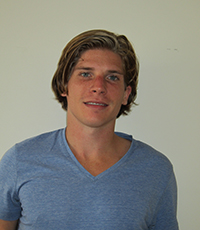
Thomas Blankers: Thomas is a postdoctoral fellow working with Kerry Shaw at Cornell. He studies behavioral, genomic, and geographical variation in crickets to shed light on the speciation process and the origin of earth’s biodiversity.
Graduate Students
Natalie Graham: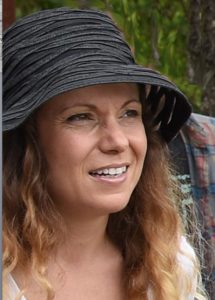 Natalie is working to understand the community effects of invasive species. Her research aims to develop ecosystem metrics of invasion using large-scale DNA-based biodiversity sampling to allow rapid assessment of species identity, diversity, and interactions across entire communities of different geological age, with particular focus on parasitoid wasps in the Hawaiian Islands. The major deliverable will be a metric – whether deviation from expected species abundance distributions or interaction networks – that encapsulates the properties of biological communities before, during, and after the establishment and expansion of a key invader. This will allow her to identify the primary shifts (species, abundances, networks) within a community that are most closely linked to shifts in ecosystem properties. Using the natural system provided by the Hawaiian Islands in which communities are arranged chronologically, she can assess different levels of invasion at sites of different complexity.
Natalie is working to understand the community effects of invasive species. Her research aims to develop ecosystem metrics of invasion using large-scale DNA-based biodiversity sampling to allow rapid assessment of species identity, diversity, and interactions across entire communities of different geological age, with particular focus on parasitoid wasps in the Hawaiian Islands. The major deliverable will be a metric – whether deviation from expected species abundance distributions or interaction networks – that encapsulates the properties of biological communities before, during, and after the establishment and expansion of a key invader. This will allow her to identify the primary shifts (species, abundances, networks) within a community that are most closely linked to shifts in ecosystem properties. Using the natural system provided by the Hawaiian Islands in which communities are arranged chronologically, she can assess different levels of invasion at sites of different complexity.
Susan Kennedy: 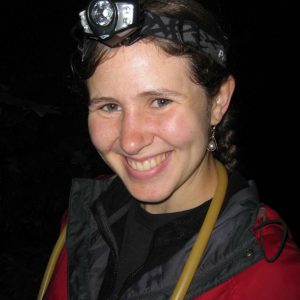 Susan is working on different communities of spiders across the Hawaiian Islands. She has been using genomic approaches as well as stable isotopes, together with detailed ecological and behavioral studies, to examine how communities of the predators change over time, using the geological age gradient provided by hotspot nature of the islands. Her recent work has shown that spiders tend to accumulate nitrogen that reflects, with remarkable precision, both (1) their trophic position coupled with niche requirements; and (2) the nitrogen availability of their immediate substrate. She is also quantifying niche properties of spiders to identify parameters that allow multiple species to co-occur. She is also using metagenomic tools to identify gut content from spiders, using this information to characterize food web properties of the spider communities across the island chronosequence.
Susan is working on different communities of spiders across the Hawaiian Islands. She has been using genomic approaches as well as stable isotopes, together with detailed ecological and behavioral studies, to examine how communities of the predators change over time, using the geological age gradient provided by hotspot nature of the islands. Her recent work has shown that spiders tend to accumulate nitrogen that reflects, with remarkable precision, both (1) their trophic position coupled with niche requirements; and (2) the nitrogen availability of their immediate substrate. She is also quantifying niche properties of spiders to identify parameters that allow multiple species to co-occur. She is also using metagenomic tools to identify gut content from spiders, using this information to characterize food web properties of the spider communities across the island chronosequence.
 Jun Ying Lim: Jun is interested in community assembly processes, in particular, developing ways to try to incorporate diversification dynamics, ecological networks, patterns of trait evolution into our understanding of such processes. For his dissertation work, I aim to study how the functional community assembly of Hawaiian forest communities changes over evolutionary time by using the Hawaiian archipelago as a chronosequence. Some of his previous work has revolved around understanding how phylogenetic diversity interacts with spatial scale, and applying those insights to understanding community phylogenetic patterns of British grassland communities and the phylogenetic patterns of invasive species in the British flora. Jun is currently a PhD candidate at UC Berkeley. He is currently involved in a crowd-sourcing project focused on digitising and managing museum specimen label information of the Essig Museum of Entomology at UC Berkeley. Click here for his CV.
Jun Ying Lim: Jun is interested in community assembly processes, in particular, developing ways to try to incorporate diversification dynamics, ecological networks, patterns of trait evolution into our understanding of such processes. For his dissertation work, I aim to study how the functional community assembly of Hawaiian forest communities changes over evolutionary time by using the Hawaiian archipelago as a chronosequence. Some of his previous work has revolved around understanding how phylogenetic diversity interacts with spatial scale, and applying those insights to understanding community phylogenetic patterns of British grassland communities and the phylogenetic patterns of invasive species in the British flora. Jun is currently a PhD candidate at UC Berkeley. He is currently involved in a crowd-sourcing project focused on digitising and managing museum specimen label information of the Essig Museum of Entomology at UC Berkeley. Click here for his CV.
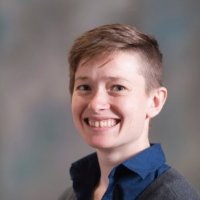
Elske Tielens: Elske is a community ecologist interested in plant-insect interactions and community assembly. Her research focuses on ecosystem engineers and the effect of spatial structure of the landscape on species composition and diversity. She is interested in dispersal, connection between communities and how processes change across spatial and temporal scale. Her current work examines ohi’a canopy arthropods on the Hawaii Islands. Elske is completing her PhD at the University of Maryland in Dr. Daniel Gruner’s lab as part of the Behavior, Ecology, Evolution and Systematics (BEES) graduate program.
Emeriti Graduate Students & Postdocs (still working!)
 Andy Rominger: Andy is interested in how and why evolutionary history drives contemporary ecological dynamics. He approaches these questions from the theoretical perspective by testing synthetic theories of biodiversity based on statistical mechanics, as well by taking an empirical perspective, collecting new data about the evolution and ecology of arthropod groups. These data can be used test how past rates of diversification drive current distributions of diversity across geographic space. Andy finished his PhD at the University of California, Berkeley and is now an Omidyar Fellow at the Santa Fe Institute.
Andy Rominger: Andy is interested in how and why evolutionary history drives contemporary ecological dynamics. He approaches these questions from the theoretical perspective by testing synthetic theories of biodiversity based on statistical mechanics, as well by taking an empirical perspective, collecting new data about the evolution and ecology of arthropod groups. These data can be used test how past rates of diversification drive current distributions of diversity across geographic space. Andy finished his PhD at the University of California, Berkeley and is now an Omidyar Fellow at the Santa Fe Institute.
Ellie Armstrong: Ellie is interested in the genomics of speciation, and how diversity is produced and maintained on a genomic level. She is currently working on sequencing genomes of several Drosophila from the picture-wing clade in order to test if repeatable genomic patters arise over evolutionary time in species which have similar ecological pressures. She is currently a PhD student at Stanford, having completed her Masters at the University of Hawaii at Hilo, and began working with Dimensions as an undergraduate at UC Berkeley.
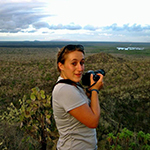 Anna Hiller Anna conducted her undergraduate thesis under Kari Goodman and Rosie Gillespie. She used Species Distribution Modeling to investigate the niches of Laupala crickets and is currently expanding the project to other Dimensions focal taxa. She is broadly interested in biogeography and the use of natural history collections in contemporary research. She is currently a PhD student in the Brumfield lab at LSU.
Anna Hiller Anna conducted her undergraduate thesis under Kari Goodman and Rosie Gillespie. She used Species Distribution Modeling to investigate the niches of Laupala crickets and is currently expanding the project to other Dimensions focal taxa. She is broadly interested in biogeography and the use of natural history collections in contemporary research. She is currently a PhD student in the Brumfield lab at LSU.
 Benoît Perez-Lamarque, Département de Biologie. École Normale Supérieure de Paris. Benoît was an intern in our group, working on the role of microbial interactions, and how these changed across the Hawaiian chronosequence. After he left our lab, Benoît joined the lab of Hélène Morlon as a master student. he maintains his interest in the interactions between complex organisms and their unicellular symbionts, working on models of coevolution between hosts and microbiota. He is a student from the Master IMaLiS at the École Normale Supérieure and the Master Ecology, Biodiversity and Evolution at the Université Pierre et Marie Curie.
Benoît Perez-Lamarque, Département de Biologie. École Normale Supérieure de Paris. Benoît was an intern in our group, working on the role of microbial interactions, and how these changed across the Hawaiian chronosequence. After he left our lab, Benoît joined the lab of Hélène Morlon as a master student. he maintains his interest in the interactions between complex organisms and their unicellular symbionts, working on models of coevolution between hosts and microbiota. He is a student from the Master IMaLiS at the École Normale Supérieure and the Master Ecology, Biodiversity and Evolution at the Université Pierre et Marie Curie.
Guillemette de Kerdrel is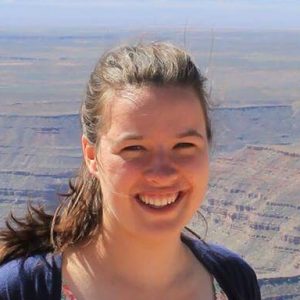 a Masters student at AgroParisTech, the Institut des sciences et industries du vivant et de l’environnement. Before this she was at the École Normale Supérieure, Paris. She was an intern in our lab from March – July 2017, during which time she worked with Henrik Krehenwinkel to develop the core of the reference collection for the molecular metabarcoding work for Hawaiian arthropods.
a Masters student at AgroParisTech, the Institut des sciences et industries du vivant et de l’environnement. Before this she was at the École Normale Supérieure, Paris. She was an intern in our lab from March – July 2017, during which time she worked with Henrik Krehenwinkel to develop the core of the reference collection for the molecular metabarcoding work for Hawaiian arthropods.
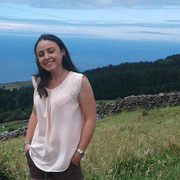 Martha Alexandra Rueda. Alexandra is interested in interactions between spiders and their prey, and what affects levels of specialization and the evolution thereof. She has been generating data on the gut content of Hawaiian spiders, and levels of specialization within a given taxon, and how this changes across the chronosequence. Alexandra is finishing her PhD at the University of Los Andes (Colombia) Bogotá.
Martha Alexandra Rueda. Alexandra is interested in interactions between spiders and their prey, and what affects levels of specialization and the evolution thereof. She has been generating data on the gut content of Hawaiian spiders, and levels of specialization within a given taxon, and how this changes across the chronosequence. Alexandra is finishing her PhD at the University of Los Andes (Colombia) Bogotá.
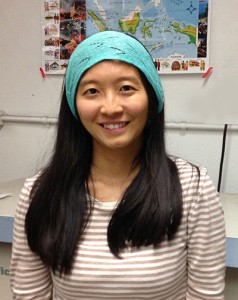 Cerise Chen Cerise worked with us on developing molecular markers for the focal arthropod lineages. Her primary research focuses on the phylogeny of calcaxonian gorgonians and sea pens from both molecular and morphological perspectives, using scanning electron microscopy (SEM) and polarized light microscopy as well as octocoral-specific mitochondrial MutS homolog, mtMutS (msh1) and ND2 markers, to gain insights of the evolutionary relationship between the two phylogenetic groupings within the subclass Octocorallia. She is currently a PhD student at the University of California Santa Cruz, with Giacomo Bernardi.
Cerise Chen Cerise worked with us on developing molecular markers for the focal arthropod lineages. Her primary research focuses on the phylogeny of calcaxonian gorgonians and sea pens from both molecular and morphological perspectives, using scanning electron microscopy (SEM) and polarized light microscopy as well as octocoral-specific mitochondrial MutS homolog, mtMutS (msh1) and ND2 markers, to gain insights of the evolutionary relationship between the two phylogenetic groupings within the subclass Octocorallia. She is currently a PhD student at the University of California Santa Cruz, with Giacomo Bernardi.
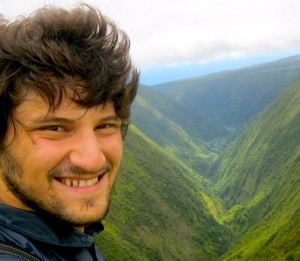 Darko Cotoras: Darko’s research interests are related with the study of historical processes that create biodiversity, particularly in conditions of isolation. As a PhD at UC Berkeley he studied the temporal dynamic of the adaptive radiation of the Tetragnatha spiders in the Hawaiian archipelago. He examined between species comparative population genetics combining next-gen sequencing methods with Sanger sequencing of mitochondrial genes. He also studied the color polymorphism of several species and their habitat associations. Darko is currently a post doc with UC Santa Cruz studying the biogeography of this genus on different archipelagoes on the Pacific Ocean. Link to CV here: English, Spanish
Darko Cotoras: Darko’s research interests are related with the study of historical processes that create biodiversity, particularly in conditions of isolation. As a PhD at UC Berkeley he studied the temporal dynamic of the adaptive radiation of the Tetragnatha spiders in the Hawaiian archipelago. He examined between species comparative population genetics combining next-gen sequencing methods with Sanger sequencing of mitochondrial genes. He also studied the color polymorphism of several species and their habitat associations. Darko is currently a post doc with UC Santa Cruz studying the biogeography of this genus on different archipelagoes on the Pacific Ocean. Link to CV here: English, Spanish
Undergraduates
Arthropod sorting
- Edward Huang
- Marisa Fong
- Grace Paxton
- Ekechi Cross
- Elyse Fitzsimons
- Jackie Chandler
- Lisa Perrine
- Tara Gallant
- Katie Jocelyn
- Taylor Kane
- Che Rubalcava-Cunan
- Jacqueline Edinger
- Patricia Lizette Torres
- Taylor Liu
- Elliot Thompson
- Katelyn Adam
- Brittany Mathat (biogeography of Nabis bugs)
- Katy Baylon (high school student)
Arthropod microbiome
- Kelley Henning (arthropod microbiomes)
- Terisa Yin (arthropod microbiomes)
Ecology evolution of arthropods
- Lier Guo (parasitism in spiders)
- Karen Gallardo (predation on arthropods by birds)
- Crispin Herrick
- Kaela Shiigi
Ecology evolution of plants
- Iljin Cho (biogeography of Peperomia)
Other Dimensions Contributors
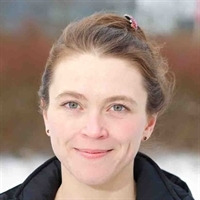 Lisa Becking Lisa is an Assistant Professor at Wageningen University in the Netherlands, working on diversity patterns in marine lakes in Indonesia. Lisa is interested in colonization of lakes of different age and with different environmental conditions.
Lisa Becking Lisa is an Assistant Professor at Wageningen University in the Netherlands, working on diversity patterns in marine lakes in Indonesia. Lisa is interested in colonization of lakes of different age and with different environmental conditions.
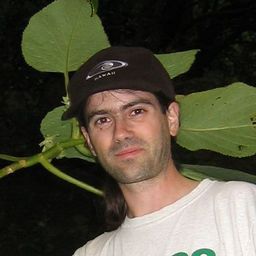 Karl Magnacca Karl is currently working with the O‘ahu Army Natural Resources Program, while also conducting his own research as a research associate at the Bishop Museum, and providing scientific consulting services as an independent contractor.
Karl Magnacca Karl is currently working with the O‘ahu Army Natural Resources Program, while also conducting his own research as a research associate at the Bishop Museum, and providing scientific consulting services as an independent contractor.
Tyler Linderoth.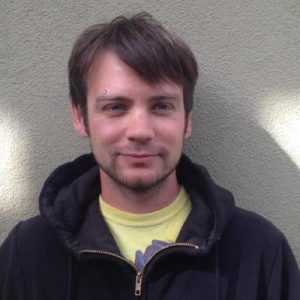 Tyler is a graduate student with Rasmus Nielsen. His research focuses on developing and applying statistical and computational methods to conservation and evolutionary biology, with an emphasis on genomic approaches.
Tyler is a graduate student with Rasmus Nielsen. His research focuses on developing and applying statistical and computational methods to conservation and evolutionary biology, with an emphasis on genomic approaches.
Joanne Clavel. 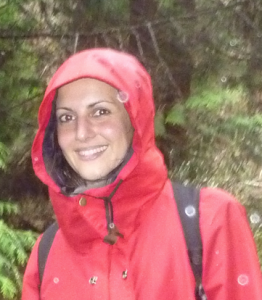 Joanne’s work aims to understand the functioning of biodiversity under global change, including climate change and habitat alterations. She has shown that specialist and generalist species of birds respond differently to spatial and temporal changes in land use and she has developed biodiversity indicators based on specialization. She also works on how ecological questions can be examined from ethical, aesthetic and political perspectives. She seeks to understand the so-called cultural services of nature in areas where intensive agriculture, increasing urbanization, and sensitive areas coexist.
Joanne’s work aims to understand the functioning of biodiversity under global change, including climate change and habitat alterations. She has shown that specialist and generalist species of birds respond differently to spatial and temporal changes in land use and she has developed biodiversity indicators based on specialization. She also works on how ecological questions can be examined from ethical, aesthetic and political perspectives. She seeks to understand the so-called cultural services of nature in areas where intensive agriculture, increasing urbanization, and sensitive areas coexist.
Jing Sun
Post-Docs Emeriti
 Michael Brewer: Michael’s research focuses on the evolutionary genomics and systematics of arachnids and myriapods. As a post-doc at UC Berkeley, he previously investigated the genetic changes associated with several phenotypes in the adaptive radiation of Hawaiian Tetragnatha (Araneae: Tetragnathidae). His current projects include the evolution of venoms in Tetragnatha spiders, the genetic basis of color evolution in spiders and millipedes, and arthropod associated microbiomes. Michael is currently an Assistant Professor Position at East Carolina University.
Michael Brewer: Michael’s research focuses on the evolutionary genomics and systematics of arachnids and myriapods. As a post-doc at UC Berkeley, he previously investigated the genetic changes associated with several phenotypes in the adaptive radiation of Hawaiian Tetragnatha (Araneae: Tetragnathidae). His current projects include the evolution of venoms in Tetragnatha spiders, the genetic basis of color evolution in spiders and millipedes, and arthropod associated microbiomes. Michael is currently an Assistant Professor Position at East Carolina University.
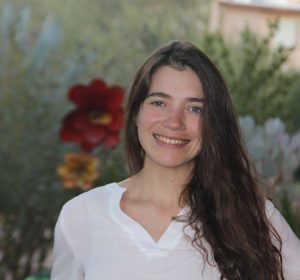
Fernanda Valdovinos: Fernanda has been a postdoctoral fellow with Neo Martinez at the University of Arizona. She is now an Assistant Professors in Theoretical Ecology and the Department of Ecology and Evolutionary Biology and the Center for the Study of Complex Systems at the University of Michigan. She studies the structure and dynamics of ecological networks at ecological and evolutionary scales; including their resilience to biodiversity loss, biological invasions, climate change, and exploitation by humans.
Field Crew
Ari DeMarco
Tom Fezza

